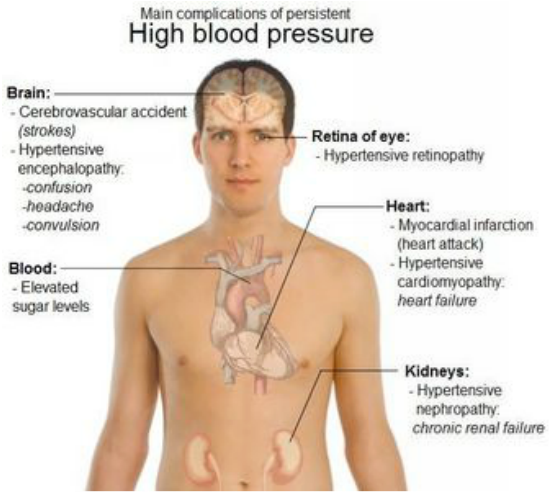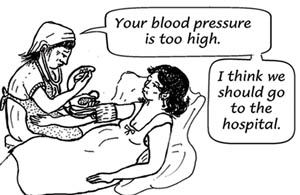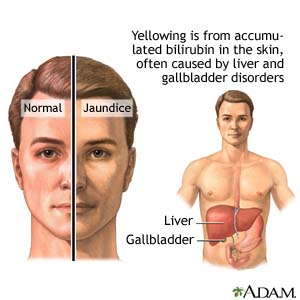Dictionary Meaning -
(according to Dorland's pocket medical Dictionary)
hypertension - persistently high arterial blood pressure; it may have no known cause (essential, idiopathic, or primary hypertension) or may be associated with other diseases (secondary hypertension).
accelerated hypertension - progressive hypertension with the fundoscopic vascular changes of malignant hypertension but without papilledema.
adrenal hypertension - hypertension associated with an adrenal tumour that secretes mineralocorticoids.
borderline hypertension - a condition in which the arterial blood pressure is sometimes within the normotensive range & and sometimes within the hypertensive range.
goldblatt hypertension - that caused experimentally by a goldblatt kidney.
labile hypertension - borderline hypertension.
malignant hypertension - a severe hypertensive state with papilledema of the ocular fundus & vascular haemorrhagic lesions, thickening of the small arteries and arterioles, left ventricular hypertrophy, and poor prognosis.
ocular hypertension - persistently elevated intra ocular pressure in the absence of any signs of glaucoma; it may or may not progress to open angle glaucoma.
persistent pulmonary hypertension of the newborn - a condition in newborns in which blood continues to flow through the foramen ovale and a patent ductus arteriosus, bypassing the lungs and resulting in hypoxaemia.
portal hypertension - abnormally increased pressure in the pulmonary circulation.
renal hypertension - that associated with or due to renal disease with a factor of parenchymatous ischemia.
renovascular hypertension - that due to occlusive disease of the renal arteries.
systemic venous hypertension - elevation of systemic venous pressure, usually detected by inspection of the jugular veins.
Pathological Point Of View -
Signs & Symptoms :-
Complications :-
Management :-
Treatment in modern medicine :-
Mild hypertension = Diastolic <90 mm.
Treatment in Homoeopathy :-
For More Details :-
hypertension - persistently high arterial blood pressure; it may have no known cause (essential, idiopathic, or primary hypertension) or may be associated with other diseases (secondary hypertension).
accelerated hypertension - progressive hypertension with the fundoscopic vascular changes of malignant hypertension but without papilledema.
adrenal hypertension - hypertension associated with an adrenal tumour that secretes mineralocorticoids.
borderline hypertension - a condition in which the arterial blood pressure is sometimes within the normotensive range & and sometimes within the hypertensive range.
goldblatt hypertension - that caused experimentally by a goldblatt kidney.
labile hypertension - borderline hypertension.
malignant hypertension - a severe hypertensive state with papilledema of the ocular fundus & vascular haemorrhagic lesions, thickening of the small arteries and arterioles, left ventricular hypertrophy, and poor prognosis.
ocular hypertension - persistently elevated intra ocular pressure in the absence of any signs of glaucoma; it may or may not progress to open angle glaucoma.
persistent pulmonary hypertension of the newborn - a condition in newborns in which blood continues to flow through the foramen ovale and a patent ductus arteriosus, bypassing the lungs and resulting in hypoxaemia.
portal hypertension - abnormally increased pressure in the pulmonary circulation.
renal hypertension - that associated with or due to renal disease with a factor of parenchymatous ischemia.
renovascular hypertension - that due to occlusive disease of the renal arteries.
systemic venous hypertension - elevation of systemic venous pressure, usually detected by inspection of the jugular veins.
Pathological Point Of View -
- Hypertension (HTN) or high blood pressure, sometimes called arterial hypertension, is a chronic medical condition in which the blood pressure in the arteries is elevated.
- Blood pressure is summarised by two measurements, systolic and diastolic, which depend on whether the heart muscle is contracting (systole) or relaxed between beats (diastole).
- This equals the maximum and minimum pressure, respectively.
- There are different definitions of the normal range of blood pressure. Normal blood pressure at rest is within the range of 100–140 mmHg systolic (top reading) and 60–90 mmHg diastolic (bottom reading).
- High blood pressure is said to be present if it is often at or above 140/90 mmHg.
For More Details :-
Causes :-
Signs & Symptoms :-
Complications :-
Management :-
Treatment in ayurveda :-
Treatment in modern medicine :-
- Detect hypertension in time, before any serious complication arises. hypertension means Systolic > 140 mm and Diastolic > 90 mm ( >84 mm in younger patients)
- check B.P routinely in every patient of high risk group.
- in every patient above 40 years of age once in a year.
- in every diabetic and obese patient.
- in every case with headache, giddiness, chest pain & epistaxis.
- in direct relatives of hypertensive patients (son, Brother, uncle etc.)
Mild hypertension = Diastolic <90 mm.
- salt restricted diet. avoid extra salt and pickles. salt in cooking may be allowed. if possible, low sodium salt should be used.
- low fat diet. avoid oil, ghee, deep fried foods. i.e., less of saturated fats.
- reduce weight, if overweight, by regular exercise.
- regularise working hours and sleep for 8 hours. yoga for relaxation of mind is helpful. daily aerobic exercises.
- check B.P. every week.
if not controlled,
- Beta blocker can be given.
Moderate hypertension = Diastolic >90 mm.
- start with Beta blocker.
if not controlled,
- Combine 2 drugs e.g., Beta blocker + Ca blocker Or ACE inhibitor + Beta blocker etc.
- Add a Diuretic.
- Stop salt intake completely.
- Bed rest.
- Refer to the physician for further investigations.
Treatment in Homoeopathy :-
" One Single Simple Drug Substance In Its Most Suitable Potency, According To Symptom Similarity Based On Totality! "
There are a few rubrics based on hypertension in the Complete 2009 Repertory and Murphy’s II Repertory;
- B; Blood; HYPERTENSION; high blood pressure (80) : acon., adon., adren., agar., aml-n., aran., arg-n., ars., asar., aster., aur., aur-i., aur-m., aur-m-n., bar-c., bar-m., calcul-r., calc., calc-f., calc-p., caust., chin-s., choc., coff., con., cortiso., Crat., cupr., cupr-acet., cupr-ar., dig., fl-ac., glon., grat., ign., iod., iris, kali-ar., kali-c., kali-m., kali-p., Lach., lat-m., lyc., lycps., mag-c., naja, Nat-m., nit-ac., nux-v., ph-ac., phos., pic-ac., pitu-gl., plb., psor., puls., rad-br., reser., rauw., rhus-t., sang., scopo., sec., sep., sil., squil., stront-c., stroph., sulph., sumb., tab., thal., thlaspi, thuj., valer., vanad., Verat., verat-v., visc.
- Clinical; HYPERTENSION (142) : acan-pl., acon., adon., Adren., agar., aids, ALL-S., alli-m., aml-n., anh., ant-ar., aran., aran-ix., Arg-n., arn., ars., asar., aster., atro., Aur., aur-br., aur-i., aur-m., aur-m-n., Bar-c., bar-m., bell., boerh., borag., butho-t., Cact., cadm., Calc., calc-f., calc-p., calcul-r., cale-z., carb-v., carc., caruk-b., Caust., chel., chin-s., chir-f., chloram., chlorpr., choc., coff., con., convo-s., cortico., cortiso., Crat., cupr., cupr-acet., cupr-ar., cyna., cyt-l., dig., EPHIN., ergot., esp-g., eup-per., feld., fl-ac., gels., gins., glon., glyc-g., Grat., hura, hyosin., Ign., interf., iod., ion-rad., ipom., iris, jug-c., Kali-c., Kali-chl., kali-p., kali-sal., kres., LACH., lat-m., lepro., Lyc., lycps., mag-c., mand., mangi., meli., methys., morg., naja, Nat-m., nit-ac., NUX-V., onop., parth., passi., Ph-ac., phase., Phos., pic-ac., pitu-p., Plb., plb-i., psil-s., Psor., Puls., rad-br., Rauw., reser., rhus-t., sang., saroth., scarl., Sec., sed-ac., Sep., ser-ang., Sil., squil., Stront-c., Stront-i., stroph., SULPH., Sumb., tab., Tama., thal., thlaspi, Thuj., thyr., tity-s., valer., vanad., VERAT., verat-v., VISC.
- Clinical; HYPERTENSION; Hypotension, before (2) : butho-t., cyna.
- Clinical; HYPERTENSION; Old people, in (1) : GLON.
- Clinical; HYPERTENSION; Redness of face, with (4) : aster., bell., glon., rauw.
- Clinical; HYPERTENSION; Sudden rise of (1) : coff.
- Clinical; HYPERTENSION; Vertigo, in (3) : cyna., nat-m., VISC.
- Heart & Circulation; TENSION; Circulation; increased, arteries (5) : chlor., chloram., Coff., feld., gels.
For More Details :-
Take Care Of Your Body,
It's The Only Place You Have To Live In.
With Best Regards, Karnav Thakkar :) :)

















